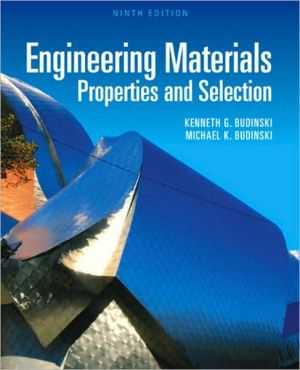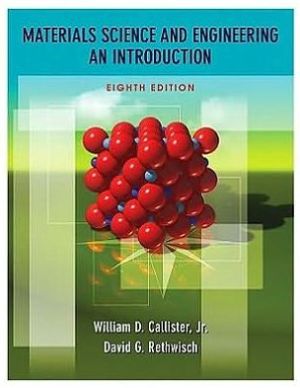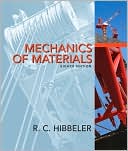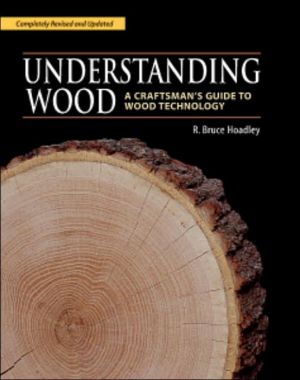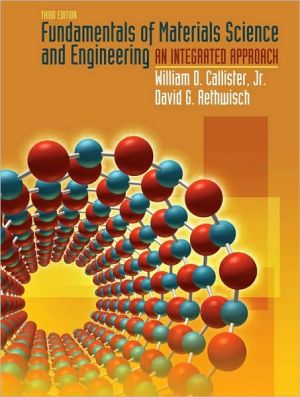Engineering Materials: Properties and Selection
Covering all important classes of materials and manufacturing processes, Engineering Materials 9e teaches students why materials fail, and how to select materials which will not. Drawing on the authors 66 years of combined author experience, this book teaches students how to build a repertoire of materials suitable for most engineering applications, and how to properly specify the materials on engineering drawings.\ Changes to this book\ \ Revised and fully-up-to-date\ Every chapter covers...
Search in google:
The father-son authoring duo of Kenneth G. Budinski and Michael K. Budinski brings nearly 70 years of combined industry experience to bear in this practical, reader-friendly introduction to engineering materials. This text covers theory and industry-standard selection practices, providing students with the working knowledge to make an informed selection of materials for engineering applications and to correctly specify materials on drawings and purchasing documents. Encompassing all significant material systems–metals, ceramics, plastics, and composites–this text incorporates the most up-to-date information on material usage and availability, addresses the increasingly global nature of the field, and reflects the suggestions of numerous adopters of previous editions.For undergraduate courses in Metallurgy and Materials Science Booknews A textbook that presents information on the nature and properties of materials used in engineering design, and presents guidelines to assist designers in selecting the right material for a given job. This edition (fourth was 1992) still covers all of the important material systems: metals, ceramics, plastics, and composites. All chapters are updated to reflect current trends in material usage and availability, and the chapter on plating processes has been replaced with a chapter on surface engineering. Annotation c. Book News, Inc., Portland, OR (booknews.com)
Chapter 1The Structure of Materials11.1The Origin of Engineering Materials21.2The Periodic Table71.3Forming Engineering Materials from the Elements81.4The Solid State101.5The Nature of Metals121.6The Nature of Ceramics171.7The Nature of Polymers181.8The Nature of Composites19Chapter 2Properties of Materials252.1The Property Spectrum252.2Chemical Properties282.3Physical Properties302.4Mechanical Properties332.5Manufacturing Considerations532.6Property Information59Chapter 3Tribology673.1Historical Studies of Friction and Wear683.2Contact Mechanics693.3Friction713.4Definition of Wear783.5Types of Erosion783.6Types of Wear813.7Bearings903.8Lubricants96Chapter 4Principles of Polymeric Materials1034.1Polymerization Reactions1044.2Basic Types of Polymers1084.3Strengthening Mechanisms1114.4Polymer Families1264.5Thermoplastic Commodity Plastics1284.6Thermoplastic Engineering Plastics1344.7Thermosetting Polymers1524.8Elastomers1574.9Selection of Elastomers165Chapter 5Plastic and Polymer Composite Fabrication Processes1735.1Thermoplastic Fabrication Processes1735.2Thermoset Fabrication Processes1785.3Polymer Composites1835.4Composite Fabrication Techniques1955.5Application of Polymer Composites1985.6Process Specification2045.7Recycling of Plastics206Chapter 6Selection of Plastic/Polymeric Materials2136.1Methodology of Selection2136.2Plastics for Mechanical and Structural Applications2166.3Wear and Friction of Plastics2356.4Plastics for Corrosion Control2486.5Plastics for Electrical Applications2506.6Polymer Coatings2546.7Adhesives259Chapter 7Ceramics, Cermets, Glass, and Carbon Products2757.1The Nature of Ceramics2757.2How Ceramics Are Made2777.3Microstructure of Ceramics2817.4Properties of Ceramics2857.5Concrete2897.6Glasses2907.7Carbon Products2967.8Cemented Carbides2987.9Ceramics for Structural Applications3067.10Ceramics for Wear Applications3157.11Ceramics for Environmental Resistance3167.12Electrical Properties of Ceramics3187.13Magnetic Properties of Ceramics319Chapter 8Steel Products3278.1Iron Ore Benefication3288.2Making of Steel3308.3Steel Refining3308.4Converting Steel into Shapes3408.5Steel Terminology3458.6Steel Specifications347Chapter 9Heat Treatment of Steels3539.1Equilibrium Diagrams3539.2Morphology of Steel3589.3Reasons for Heat Treating3619.4Direct Hardening3689.5Diffusion Treatments3749.6Softening3889.7Atmosphere Control3919.8Cost of Heat Treating3949.9Selection and Process Specification395Chapter 10Carbon and Alloy Steels40310.1Alloy Designation40410.2Carbon Steels40810.3Alloy Steels41910.4Selection of Alloy Steels42310.5High-Strength Sheet Steels42910.6High-Strength, Low-Alloy Steels43010.7Special Steels43210.8Selection and Specification435Chapter 11Tool Steels44111.1Identification and Classification44111.2Tool Steel Metallurgy44311.3Chemical Composition of Tool Steels45011.4Steel Properties45611.5Tool Steel Selection46211.6Specification of Tool Steels47311.7Tool Steel Defects477Chapter 12Corrosion48312.1The Nature of Corrosion48312.2Factors Affecting Corrosion49012.3Types of Corrosion49412.4Determination of Corroison Characteristics50412.5Corrosion Control509Chapter 13Stainless Steels51913.1Metallurgy of Stainless Steels52013.2Alloy Identification52913.3Physical Properties53213.4Mechanical Properties53613.5Fabrication53813.6Corrosion Characteristics54613.7Alloy Selection551Chapter 14Cast Iron, Cast Steel, and Powder Metallurgy Materials56114.1Casting Processes56114.2Casting Design56814.3Gray Iron57114.4Malleable Iron57914.5Ductile Iron58114.6White Alloy Irons58314.7Steel Castings58414.8Casting Selection58614.9Powder Metals58914.10Process Selection598Chapter 15Copper and Its Alloys60315.1Extraction of Copper from Ore60315.2Alloy Designation System60415.3Copper Products60815.4Metallurgy60815.5Properties61315.6Heat Treatment61415.7Fabrication61515.8Wear Resistance61815.9Corrosion62215.10Alloy Selection625Chapter 16Aluminum and Its Alloys62916.1General Characteristics63016.2Alloy Designation63216.3Aluminum Products63316.4Metallurgical Characteristics63416.5Heat Treatment63616.6Surface Treatments63816.7Corrosion64116.8Alloy Selection643Chapter 17Nickel, Zinc, Titanium, Magnesium, and Special Use Metals65317.1Nickel65317.2Zinc65917.3Titanium66417.4Magnesium66917.5Refractory Metals67217.6Cobalt67717.7Beryllium67817.8Gold67817.9Silver679Chapter 18Surface Engineering68518.1Cleaning68718.2Mechanical Finishing of Surfaces68818.3Electroplating69118.4Other Metallic Platings69518.5Electropolishing69718.6Photoetching69818.7Conversion Coatings69818.8Thin-Film Coatings70118.9Surface Analysis70418.10Hardfacing70618.11Thermal Spraying70718.12High-Energy Processes70818.13Diffusion Processes71018.14Selective Hardening71018.15Special Surface Treatments71118.16Organic Coatings71118.17Process Selection71218.18Specifications718Chapter 19The Selection Process72319.1The Design Process72319.2Selection Factors72619.3A Materials Repertoire73619.4Materials for Typical Machine Components74119.5Selection Case Histories741Chapter 20Failure Prevention75120.1Preventing Wear Failures75220.2Preventing Corrosion Failures75520.3Preventing Mechanical Failures76020.4Flaw Detection767Appendix 1Listing of Selected World Wide Web Sites Relating to Engineering Materials777Appendix 2Properties of Selected Engineering Materials783Index797
\ BooknewsA textbook that presents information on the nature and properties of materials used in engineering design, and presents guidelines to assist designers in selecting the right material for a given job. This edition (fourth was 1992) still covers all of the important material systems: metals, ceramics, plastics, and composites. All chapters are updated to reflect current trends in material usage and availability, and the chapter on plating processes has been replaced with a chapter on surface engineering. Annotation c. Book News, Inc., Portland, OR (booknews.com)\ \
